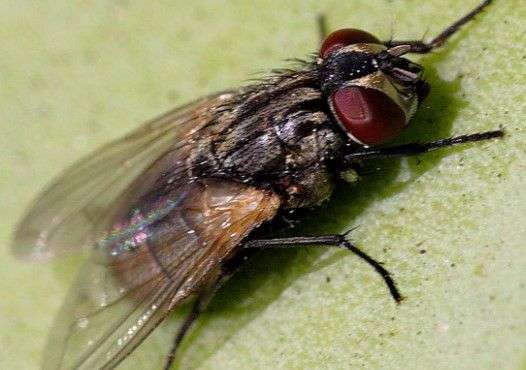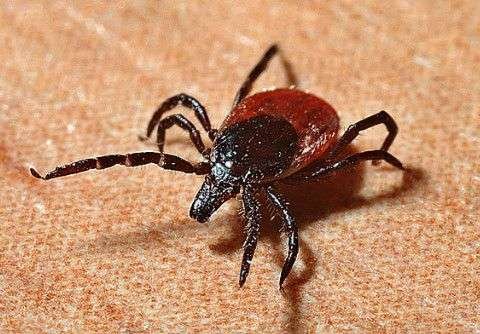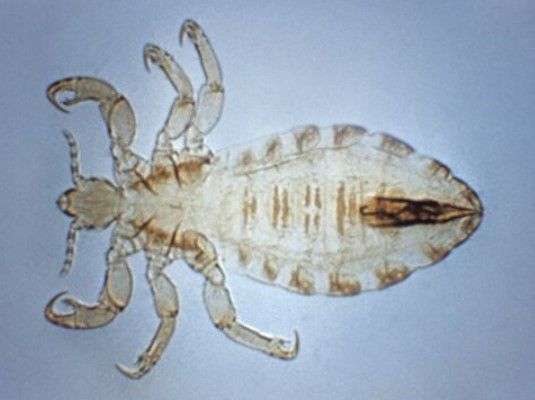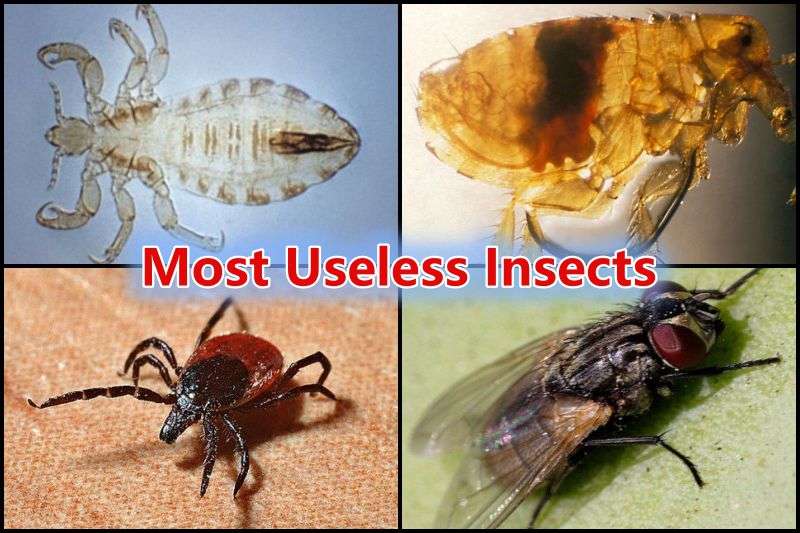Today we are counting down picks for our nine most useless insects that do the least for the environment and nature. Some insect species have nothing to do with nature or provide very little value to it.
You have heard many times that no one is useless. Yes, that’s true, but it depends on the purpose of life. Even useless insects seem to have a purpose, but it is more destructive than beneficial.
What are the useless insects?
Some insects are deemed worthless since they provide no advantage to us and can even harm us, our food, or our property. Mosquitoes, for example, can transmit illnesses, while cockroaches can contaminate food.
Some insects are also considered useless as nuisances. But they are not truly useless. They play a role in ecosystems as well.
For example, we saw mosquitoes as disease-carrying pests, but they are also pollinators of some plants, and their larvae are also food sources for fish and other aquatic animals.
Most Useless Insects or do Least for the Environment
1) Mosquitoes

Let’s begin our list with the most annoying insect: mosquitoes. We all know why we have mentioned mosquitoes on our list.
These flying insects can infect us with various severe diseases like the Zika virus, yellow fever, dengue, and malaria that can take our lives.
Also, mosquitoes can be found in nearly every part of the world.
Apart from that, mosquito bites often trigger allergic reactions, which cause itching, swelling, and discomfort.
Scientific Name: Culicidae
Only use: It is mentioned that mosquitoes are a so-called important source of food for larvae, birds, and other reptiles. But scientists believe that if we wipe out all mosquitoes, new insect breeds will take their place.
Also, they act as indicators of water quality and ecosystem health.
Potential Dangers:
- malaria
- dengue virus
- Zika
- West Nile virus
2) Gnats

Unlike mosquitoes, gnats do not spread diseases and are not dangerous to humans. However, larvae, when present in large numbers, can cause damage to house plants and young seedlings by feeding on their roots, which terminates the plants’ growth.
Despite their resemblance to flies, bees, etc., they don’t pollinate plants. In a nutshell, they are neither dangerous to humans nor to Mother Nature. But they also do not provide any value to the ecosystem. Also, they annoy humans with their biting behavior.
Scientific Name: Diptera
Only use: Like other insects, gnats only play a role as a food source for large insects and pollination.
Potential Dangers:
- Leishmaniasis
- African Sleeping Sickness
3) Flies (especially houseflies)

Flies are a species that is not universally loved because of their ability to spread diseases. They are just irritating as hell. All flies are known for spreading more than 200 known pathogens and parasites to humans.
For example, a common housefly can spread diseases such as food poisoning and dysentery. They have irritating buzzing sounds and are very unhygienic.
Not only this, if you notice, a common housefly always loves to fly from unhygienic places to the kitchen, where they purposely spread diseases.
They encompass 90% of all fly infestations, with more than 65 diseases, according to a World Health Organization (WHO) report. They are the common cause of various foodborne illnesses, like diarrhea and eye infections.
Scientific Name: Musca domestica
Only Use: Spiders love to eat flies, and more than 110,000 fly species pollinate flowering plants.
Potential Dangers:
- Foodborne illnesses
- Cholera
- Dysentery
4) Fleas

If we saw a flea from a human perspective, their use may appear limited, and their existence is frequently viewed as unwanted. When a flea bites an animal, its saliva causes irritation and itching.
Fleas are the most useless insects in nature that take advantage of our pets. They can live as long as 18 months, and once they reach adulthood, they seek out blood from other animals.
Fleas don’t have wings, but they have genitalia and claws. They are incredibly dangerous because they carry and spread diseases like bubonic plague, murine typhus, tularemia, and tungiasis. Many times, they are responsible for the deaths of our pets.
Scientific Name: Siphonaptera
Only use: Some reptiles and birds that feed on fleas get the benefits from the blood that they have sucked from the larger animals.
Potential Dangers:
- Bubonic plague
- Murine typhus
- Tungiasis
- Flea allergy and dermatitis
5) Ticks

Like fleas, ticks are also very dangerous and useless insects in the environment. Not all ticks are harmful, but some species, like deer ticks and wood ticks, spread harmful diseases like Rocky Mountain spotted fever, Lyme disease, anemia, skin irritation, and many other health complications. Tick bites can cause local irritation, redness, and itching.
During winter, tick larvae transfer from vegetation to large mammals like moose, and at one time, thousands of ticks can stay on an animal throughout its winter lifecycle. Also, climatic change is beneficial for ticks, leading them to increase their population and carry harmful diseases.
Scientific Name: Ixodida
Only use: ticks serve as food for other animals, like birds and help control wild animal populations.
But nowadays, the population of many wild animals is under threat; hence, practically, ticks and fleas don’t provide any useful benefit to mother nature.
Potential Dangers:
- Lyme disease
- babesiosis
- ehrlichiosis
6) Lice

Another useless insect on our list is lice. They literally do not contribute anything useful to nature. Lice are ectoparasitic insects that need human blood to survive. Their infestations are sometimes addressed as hygiene concerns.
They can be found on people’s scalps. Head lice are not particularly harmful, but they cause itching and excessive scratching, leading to secondary skin infections.
Scientific Name: Phthiraptera
Only use: Lice serves as food for ladybugs.
Potential Dangers:
- Typhus
- Trench fever
- Epidemic typhus
7) Bed bugs
Bedbugs, as their name suggests, are commonly found near beds or other sleeping areas. These small, reddish-brown insects feed on the blood of humans or animals. Their feeding behavior creates a nuisance and can lead to allergic reactions.
Their infestations lead to various psychological impacts like stress, anxiety, and sleep disturbances. They have no purpose and can be eradicated from the environment without majorly affecting it.
Scientific name: Cimex lectularius
Only use: They serve as the food source for spiders.
Potential Dangers:
- Anaphylactic shock
- Itching and loss of sleep
- Allergic reactions
8) Webbing clothes moths
Webbing clothes moths are considered a serious pest on clothes, wool, or stored fabrics due to their destructive habits. In addition to causing damage to textiles, webbing clothes moths can also be a nuisance.
They create a lot of problems economically and lead to frustration and inconvenience for homeowners.
They can thrive in dry environments and tolerate lower relative humidity than other cloth moths. They are especially drawn to fabrics with sweat, food, or urine stains. They are not harmful to humans.
Scientific name: Tineola bisselliella
Only use: degrade keratin-based materials, such as wool, feathers, and hair, and are the food source of some animals.
Potential Dangers:
Cause damage to stored woolen clothing.
9) Silverfish
You must have seen this insect in libraries or in your kitchen during cleaning. They got their name from the silver fish due to its silver gray color and fish-like appearance.
It mainly feeds on starchy materials such as paper, cardboard, book bindings, and glue. Similar to the cloth moths, they feed on natural fibers like silk and cotton, as well as synthetic textiles.
These household pests are responsible for the contamination of food. Not only that, but their scales and feces also act as potential allergens.
Scientific name: Lepisma saccharinum
Only use: plays an important role in the decomposition of organic material
Potential Dangers:
- Damage to property
- Contamination of food
- Allergies
Here, we conclude our article on “9 most useless insects that do very little for the environment.” We hope you like it. We will be back with another post. Till then, stay tuned with us and read the articles below.
Frequently Asked Questions:
Q1) What insects are unnecessary?
Ans: It is hard to say that any insects are unnecessary as every organism has its own role in the ecosystem, but there are some insects that do the least to the environment, like lice, fleas, mosquitoes, ticks, gnats, bed bugs, webbing clothes moths, silverfish, flies, etc.
Q2) What insects are not beneficial?
Ans: There are some insects that are considered non-beneficial or useless in nature. Some examples of non-beneficial insects are mosquitoes, flies, fleas, gnats, lice, ticks, bedbugs, etc.
Q3) Are mosquitoes useless?
Ans: Mosquitoes are not completely useless; they also serve an important role in the food chain, as they are the food source for larvae, birds, amphibians and other reptiles.
Also, they are pollinators, not the major ones like bees or butterflies, but some species of mosquitoes did play a role in it.
Q4) Are flies pointless?
Ans: Flies are not pointless from an ecological perspective, as they contribute to various ecological processes like decomposition and pollination and act as food sources for certain animals.
But from the human perspective, they are pointless and don’t do anything important; they only spread disease and create nuisances.
Q5) What insects don’t eat?
Ans: There are few insects in this world that don’t usually eat in their adult stage, like mayflies or some moth species, or in some circumstances, like during molting or hibernation.
Q6) Are there any friendly insects?
Ans: Yes, there are plenty of friendly insects that are very helpful to humans in processes like pollination, decomposition, and many more. For example, like bees, ladybugs, butterflies, praying mantises, ground beetles, hoverflies, etc.
Q7) Are insects good or bad?
Ans: Insects have both positive and negative aspects, like pollination, decomposition, biological pest control, crop damage, disease, creating nuisance, Property damage, etc.
Q8) Are all insects harmful or useless?
Ans: Not all insects are harmful or useless, as insects play a diverse role in ecosystems through various ecological processes.
Also Read:

Being a zoology student I’m always been fascinated toward animals especially insects. I love to do research and learn about different animals. As a writer I want to share my thoughts about nature through my articles. Apart from this you can find me exploring the new places and voice notes.

Comments are closed.